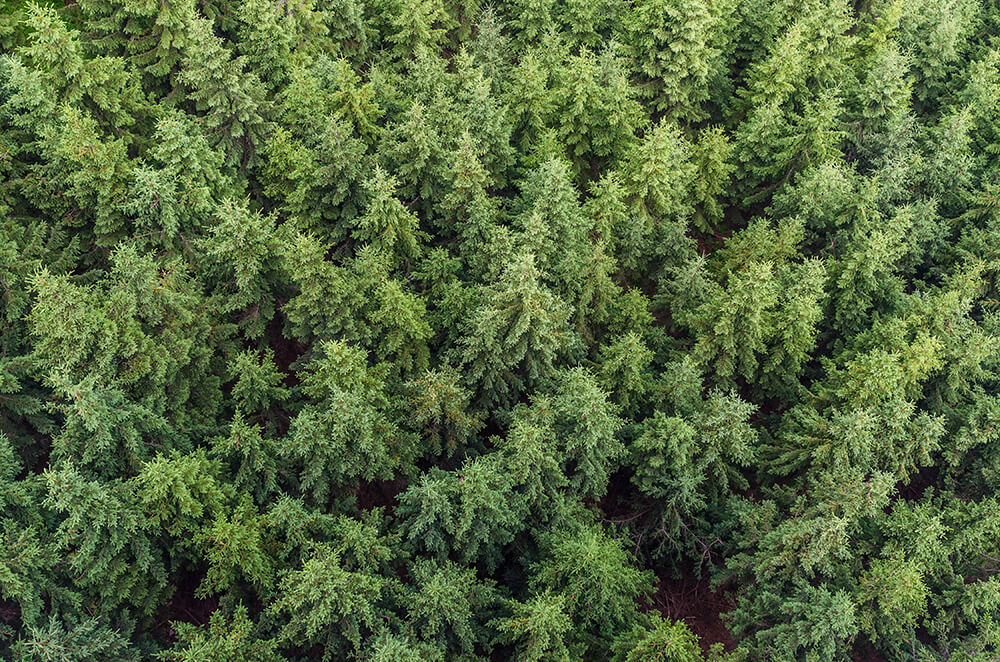The quest for a new forestry

If you research early logging practices in New England, you’ll find a lot of amazing stories. In the times before the chainsaw and the skidder, loggers headed into the woods for the winter with draft horses, crosscut saws and double-bit axes and drove the logs down the rivers in the spring. In those early days the abundance of timber in the northern forest was so great that some people figured that, by the time they finished cutting all the big trees, the first areas they had worked in would be ready to cut again.
This didn’t happen; much of Vermont transitioned from woods to farmland in the 1800s, and in all areas the pace of logging far exceeded the forest’s ability to regenerate. Other facets of our landscape shrank in tandem with our forests, as many wildlife species, including wolves, catamounts, beavers, fisher, moose, white-tailed deer, turkeys and other species, were extirpated from much or all of the state. Vermonters like George Perkins Marsh connected deforestation to widespread soil and water quality degradation, among other issues.
Through all of this, those managing Vermont’s woodlands have repeatedly experienced the amazing regenerative ability that forests demonstrate following natural or human-caused disturbances. It seems that forests always respond to adversity with abundance, continuing to grow trees that can be harvested to build, heat and decorate our homes and provide paper and electricity, while producing clear air, clean water and wildlife habitat.
Over time our understanding of forested ecosystems has improved. We now have a better grasp of how logging and land-use practices of the past 300 years have degraded the health of our forests and disturbed their ecological processes, causing them to produce less-healthy high-quality trees and less diverse wildlife habitat. Viewing forests on a purely extractive basis has produced diminishing returns, often sacrificing the future health, productivity and value of forests for short-term profits.
On the surface, resource extraction and managing healthy forests seem to be at odds. For those in the forest products industry, navigating natural resource-related laws and concerns can seem onerous and frustrating at times. For those outside of the forest products industry, logging can seem overly disruptive to our ecosystems—especially when people’s concept of timber harvesting is based on the way that logging used to be done or on the large-scale, intensive forest management practices in other parts of North America.
In my time as county forester and my conversations with landowners, foresters, loggers, conservation organizations and others, it is increasingly clear that despite the apparent contradictions between these perspectives there is common ground between them. I think we are on the cusp of a “new forestry,” a management philosophy that balances a nuanced understanding of forested ecosystems with the importance of harvesting local, renewable resources.
The harvesting of forest products, done well, produces such resources while improving the health of the forest, wildlife habitat and the growth of timber over the long term. Harvesting modeled on natural disturbance regimes increases diversity in our forests and supports their resiliency to disturbance and the effects of climate change. Practices such as “low-grading” or “worst-first” harvesting (harvesting predominately the least healthy trees in the forest), balanced with the thoughtful harvesting of some larger, higher-value trees, leaves the forest in better condition while producing some revenue for landowners. This, in turn, supports conservation by helping to incentivize owning forested land while offsetting associated costs. Protecting forested land and other elements of Vermont’s working landscape from subdivision and development supports our state’s identity and economy, from the forest products industry to tourism and outdoor recreation.
Similarly, managing and advocating to protect forests from the effects of climate change, invasive species, development, parcelization and forest fragmentation benefits all of us: from those interested in recreating, hunting and leaf peeping to those who will continue to earn a livelihood from harvesting and processing forest products.
Part of embracing a “new forestry” approach involves landowners and citizens elevating their understanding of what modern, thoughtful forest management is and how it benefits Vermont, while engaging with the nuances of forest management with an open mind. My hope is that we can all unite around the idea that local, renewable resources are worth producing, that our forests are worth protecting, and that these two ideas are not contradictory.
Ethan Tapper is the Chittenden County forester. He can be reached via email, by phone at (802) 376-5545, or at his office at 111 West Street, Essex Junction.

